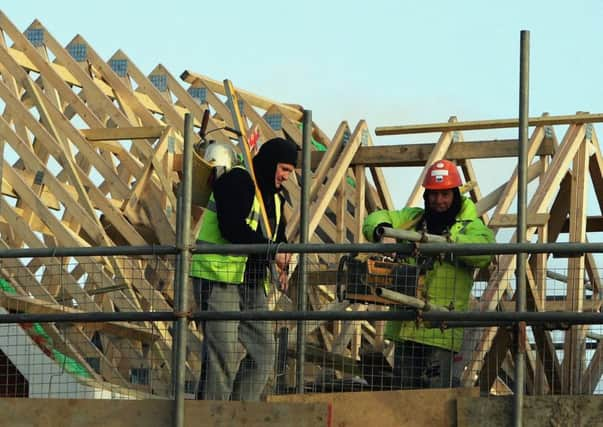Building up higher safety standards


Staff safety and high standards have always been important to construction companies, but new laws which have just come into effect have raised the bar. Construction clients, consultants, or contractors, with inadequate health and safety standards face increased liability and the risk of legal action.
The Construction (Design and Management) Regulations 2015, came into force on 6 April, in a move intended to reduce the number of accidents on construction sites, and to place greater responsibility on clients for the conduct and decisions of the people they employ to oversee health and safety.
Advertisement
Hide AdAdvertisement
Hide AdConstruction clients need to meet a number of requirements in ensuring health and safety on construction projects. They must: assemble a competent professional team and ensure that the roles of team members are clear; ensure that sufficient time and resources are allocated, by them and all members of the professional team, at appropriate stages of the project to adequately and appropriately deal with health and safety issues; ensure that there are effective mechanisms in place for project team communication and that they work; and provide, or ensure that there is provision for, suitable welfare facilities for the duration of the construction.
When a client delegates these responsibilities to a member of the professional team or contractor, it must ensure that such parties have the skill, training, expertise and capacity to carry these out. If the wrong party is appointed, responsibility may fall on the client. While the new legislation is designed to simplify health and safety requirements, the clear onus is now on clients to understand the subtle shift in liability and to change their policies and practices accordingly.
Ignorance will be no defence, and if clients are found to have fallen short of the expected standard, they may be blocked from continuing a project until they can demonstrate they have changed the way they work. Time is money and delays will potentially cost clients significantly.
Additionally, clients will be required to appoint appropriate personnel to fulfil the role of principal designer with immediate effect. Principal designer is a new role and holders must come from the ranks of designers, so it is not necessarily the case that a CDM co-ordinator will be suitable to become a principal designer. The roles and responsibilities have significantly changed. The principal designer will plan, manage and monitor the pre-construction phase and co-ordinate matters relating to health and safety.
If an existing project will continue beyond 6 October, a principal designer will have to be appointed and he will take over the health and safety responsibilities.
This effectively abolishes the previous role of CDM co-ordinator. Existing CDM co-ordinators will not necessarily be suitable for the new role of principal designer, and firms will need to make sure that they manage the transfer from an existing CDM co-ordinator to a new principal designer.
The consequences of non-compliance are potentially serious, especially for clients. If it transpires that a client was slipshod in making these appointments, it could be liable for any issues or breaches.
The penalty for non-compliance could range from delays on a project, with the risk of additional costs, through to prosecution. Clients need to ensure that correct contracts, policies and procedures are in place to cope with the changes.
Advertisement
Hide AdAdvertisement
Hide AdClients will need to ensure correct contracts, policies and procedures are in place to cope with the changes. Building projects which are in existence but which will not be completed before 5 October will require to be adjusted to deal with the principal designer and the changed roles and responsibilities.
The Construction (Design and Management) Regulations 2015 replace the previous 2007 version and are designed to reduce bureaucracy while ensuring safer working practices and environments across the construction industry. They are part of an ongoing legislative programme to improving health and safety standards across the construction industry.
The new rules are intended to enhance health and safety at sites across Scotland and the onus is being placed firmly on all who operate in the construction industry, in particular clients, to make sure that the highest standards are met. If you run a company operating in this sector and you haven’t yet made plans, you now run the risk of falling foul of the law.
• Charles Brien is a senior associate at HBJ Gateley, www.hbjgateley.com